Firefight Game Guide Beta
Welcome to the Firefight 2nd Edition Game Guide! This tool takes you and a friend through your first games of Firefight, giving you the information you need at the point you need it, just like an in-store demo! We've even provided a cool battle sound track to listen to above.
Before you begin
The best starting point for you and a friend to play Firefight is undoubtedly one of our 2-Player Starter Sets, as seen below. All the Firefight Starter sets contain the same; 2 armies, a rulebook and token set, Command Dice and d8's. Just choose the set which contains the factions that most interest you!
Build your Strike Force
For your first games of Firefight, use the free, pre-made force lists found on the Firefight List Builder > Getting Started section. Simply duplicate the list into your collection - this is now your copy to use!
Set up your play space
You'll need at least a 4' X 4' area to play a small game of Firefight. We'd recommend using the layout as seen in the Command Protocols big rulebook:

Ready for battle!
You're good to go! With minis assembled, dice in hand and tape measure at the ready, click the button below and follow the steps and actions as they present themsevles:
Setup and Who Goes First?
Firefight is played using the following sequence:
- Set Up
- Deployment
- Rounds
- Generate the Command Pool
- Take alternating Turns activating units
- End Phase
- Determine the Winner!
Action - Decide who goes first...
Both players make a Recon Roll:

From this point onwards, the player who has the Initiative as a result of this Recon Roll, will be called Player 1, and the other Player 2.
Deployment
Now is the time to bring your miniatures to bear on a warzone of the future!
Action - Deploy!
Both players add their models to the table:
Click these links to read more about: Coherency and Deployment
For this guided game, we'll play Scenario #1 - Scourge - a fight to the death! You won't need objective markers. The Scourge Scenario rules are:
GAME LENGTH
The game will last 5 Rounds.
VICTORY CONDITIONS
At the end of each Round, each player scores 3VPs if they have Destroyed one or more enemy units that Round, 3VPs if none of their own units have been Destroyed that Round, and 2VPs if they have Destroyed more units than their opponent in that Round. Once per game, a player can score a further 10VPs if they destroy their opponent’s most expensive unit (points value). If more than one unit is tied for most expensive, any of those units will count for the once per game 10VPs. The player with the most VPs at the end of the game is the winner.

With your miniatures deployed, the game now progresses into the Round loop, with each Round starting by generating Command Points:
Command Points
Before each Round, both players also need to generate the pool of Command Points they can bring to bear when activating their units using special actions called Orders.
Action - Generating the Command Pool!

Activations
This is the hub for Unit Activation. If this is the first Activation of the Round, Player 1 chooses a unit to activate.
Actions
Action - Choose your Action!
From the following list, choose an Action you'd like your Activated Unit to perform:


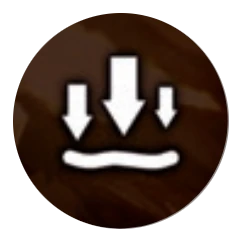
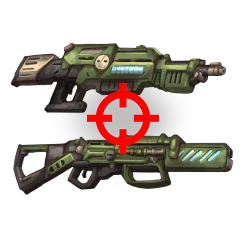
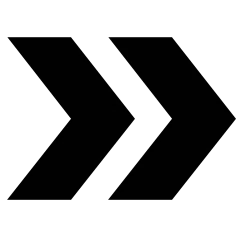
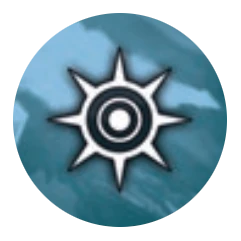
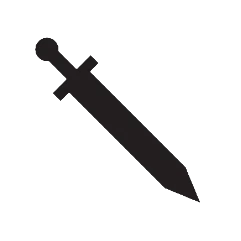

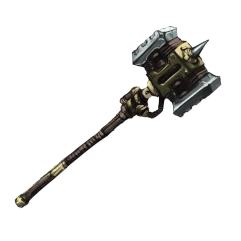
Once this unit has Activated, place an Activated Token next to it, and play passes to your opponent to Activate one of their Units. Once all Units have activated, proceed to the End phase below:
Shoot / Blaze Away / Steady Aim
Resolve your action in the following sequence:
- Check Line of Sight
- Check Range
- Determine number of Dice
- Roll to Hit
- Roll to Damage
- Remove Casualties
1. Action - Check Line of Sight
Click this link to read the section: Line of SightThe important aspect to determine is whether or not the firing unit has Clear or Partially Blocked Line of Sight.
2. Action - Check Weapon Range
3. Action - Determine Number of Dice
4. Action - Roll to Hit

When rolling to hit, apply the following modifiers to your dice rolls:
| -1 | Tagret is in Cover |
| -1 | Target is Small Unit |
| -1 | Target is a Vehicle with the Fly Keyword |
| -1 | Target has the Stealthy Keyword |
| -1 | Target has Hit the Dirt |
5. Action - Roll to Damage

6. Action - Remove Casualties
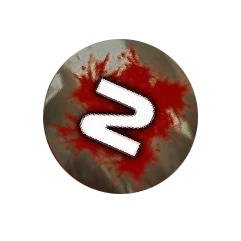
Blaze Away
Action - Blaze Away
Steady Aim
Action - Steady Aim
Note: There are extended rules and considerations that may come up during the game. Click this link to read more about: Ranged Combat
Movement: Advance or Sprint
Action - Move your models!
Optional:
Action -Assault!
If you have moved your Leader Model into contact with an enemy unit model, you now initiate an Assault:
Note: There are extended rules and considerations that may come up during the game. Click this link to read more about: Movement
Hit the Dirt!
Action - Hit the Dirt!
Overwatch
Action - Overwatch
Note: There are extended rules and considerations that may come up during the game. Click this link to read more about: Overwatch
Faction and Command Orders
Action - Faction Orders
Action - Command Orders
Note: There are extended rules and considerations that may come up during the game. Click this link to read more about: Orders
Assault
Resolve your Assault in the following sequence:
- Determine Charge Type
- Assault Reactions
- Move into Assault
- Roll to Hit
- Roll to Damage
- Remove Casualties
- Fighting Back
- Assault Resolution
1. Action - Determine Charge Type
- The Charging unit does not have LOS to the target unit before it moves (LOS is Blocked).
- The Charge movement (from Leader to target) is not in a straight line (e.g. the Leader had to run around another unit or terrain feature).
- The Charge movement (from Leader to target) travels through or over any Difficult Terrain or Obstacle, or engages an enemy unit across an Obstacle it is in contact with, or that is within a building.
- The Charge movement originated within a Building, Transport Vehicle or from an area off-table, such as arriving from Reserve.
2. Action - Assault Reactions
The Assault Reaction will be listed on the Unit Profile as one of the following: Supressive Fire, Evade, Controlled Fire or Counter Charge.
Click this link to read more about: Assault Reactions3. Action - Move into Assault
Note, a valid result of an Assault Reaction might be a now Failed Assault! Click this link to read more about: Failed Assaults
4. Action - Roll to Hit

When rolling to hit, apply the following modifiers to your dice rolls:
| +1 to hit for an Assaulting unit which has Charged (not if Hindered) |
| -1 to hit for an Assaulting unit which did not have LOS to the Defending unit when initiating the Charge |
| -1 to hit for an Assaulting or Defending unit which is Pinned |
| -1 to hit for a Defending unit which has Hit The Dirt |
Any model in Unit Coherency with the Leader Model may fight.
Click these links to read more about: Coherency5. Action - Roll to Damage

6. Action - Remove Casualties

7. Action - Fight Back
8. Action - Assault Resolution
Loser
If one unit has been destroyed, with all its models removed as casualties, it has automatically lost. Assuming it has models remaining, the losing unit in an Assault is marked as Activated and gains a Pin Marker and must remove its Hit the Dirt Marker if it has one. In addition, it must then withdraw 6” Directly Away from the winning unit, remaining 1” from enemy units, and leave any terrain or building it was within if able.
Draw
If the Assault is a draw or no damage has been caused by either side, then both units move 3” Directly Away from each other. Determine the direction of travel for both and then move the Defending unit first. Both units are then marked as Activated and both gain a Pin Marker.
Winner
The winning unit in an Assault may make a 3” consolidation move in any direction, remaining 1” from enemy units. The consolidation move may not be into a Transport Vehicle or building, but may be into other terrain. The winning unit may immediately remove a Pin Marker if it has one. If the losing unit was occupying terrain the winner may move to occupy the same terrain feature as part of its consolidation move, if the Leader can reach it.
Note: There are extended rules and considerations that may come up during the game. Click this link to read more about: Assaults
End Phase
The Round concludes with the End Phase. The player who finished activating first will have the Initiative for the next Round and completes steps 1 to 3 below. Their opponent then does the same.
- Remove Pin Markers
- Perform a Nerve test for each Broken unit.
- Remove tokens.
- Count Victory Points (depending on mission) and determine if the victory conditions have been met. If not, continue play for another Round.
1. Action - Remove Pin Markers

2. Action - Perform Nerve Tests
| -1 | The unit is Pinned |
| -2 | The unit is now the single remaining model from a Troop or Specialist unit. |
| +1 | The unit is in a Building |
3. Action - Remove Tokens
3. Action - Count Victory Points
If the game is over - congratulations! You've made it through, and here's to many more! If you're still playing Rounds - go ahead and start back at generating your Command Points and continue from there.




